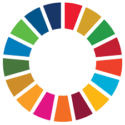
| About :: | |||
|---|---|---|---|
| Birthday : | Feb 20, 1976 | Gender : | Male |
| Mobile : | +91 96792 60992 | Email : | wgc.1976@gmail.com support@iso26000.in |
| Address : | |||
| Chungyalpa House, MG Marg, New Market Gangtok, Sikkim, India |
|||
To qualify as a biodiversity hotspot a region must meet two strict criteria:
(1) It must contain at least 0.5% or 1,500 species of vascular plants (category of land plants) as endemics (state of a species being unique to a defined geographic location, such as an island, nation, country or other defined zone, or habitat type;) and
(2) It has to have lost at least 70% of its primary vegetation.
[source: https://www.conservation.org/priorities/biodiversity-hotspots]
Around the world, 36 areas qualify under this definition. These sites support nearly 60% of the world’s plant, bird, mammal, reptile, and amphibian species, with a very high share of those species as endemics. India is recognized as one of the 17 mega diversity countries of the world and owns two of the 36 global biodiversity hotspots namely, the Western Ghats and the Eastern Himalayas.
A megadiverse country is one of a group of nations that harbours the majority of Earth’s species and high numbers of endemic species. Conservation International identified 17 megadiverse countries in 1998.
 With only 2.4% of the earth’s land area, India accounts for 7-8% of the recorded species in the world. Sikkim covering just 0.2 % of the geographical area of the country has 26% of the country’s total biodiversity.
With only 2.4% of the earth’s land area, India accounts for 7-8% of the recorded species in the world. Sikkim covering just 0.2 % of the geographical area of the country has 26% of the country’s total biodiversity.
As a business student and management professor, I approached the climate change and environmental and social issues through business lens and the outcome of it was this project. At the heart of climate crisis are industrial activities.
If businesses embrace their social responsibility much can be achieved. However, the onus is on all businesses …..including micro businesses.
This project was envisioned to educate, encourage and inspire small and micro businesses to embrace sustainable practices and shoulder their social responsibility. But they represent one side of the equation. The other side involves the government and they constitute perhaps the most important stakeholder.
The next phase of this project is to initiate research into government policies and regulations concerning business practices. It is our aim to become a repository of best practices and a reference point for governments at all levels.


